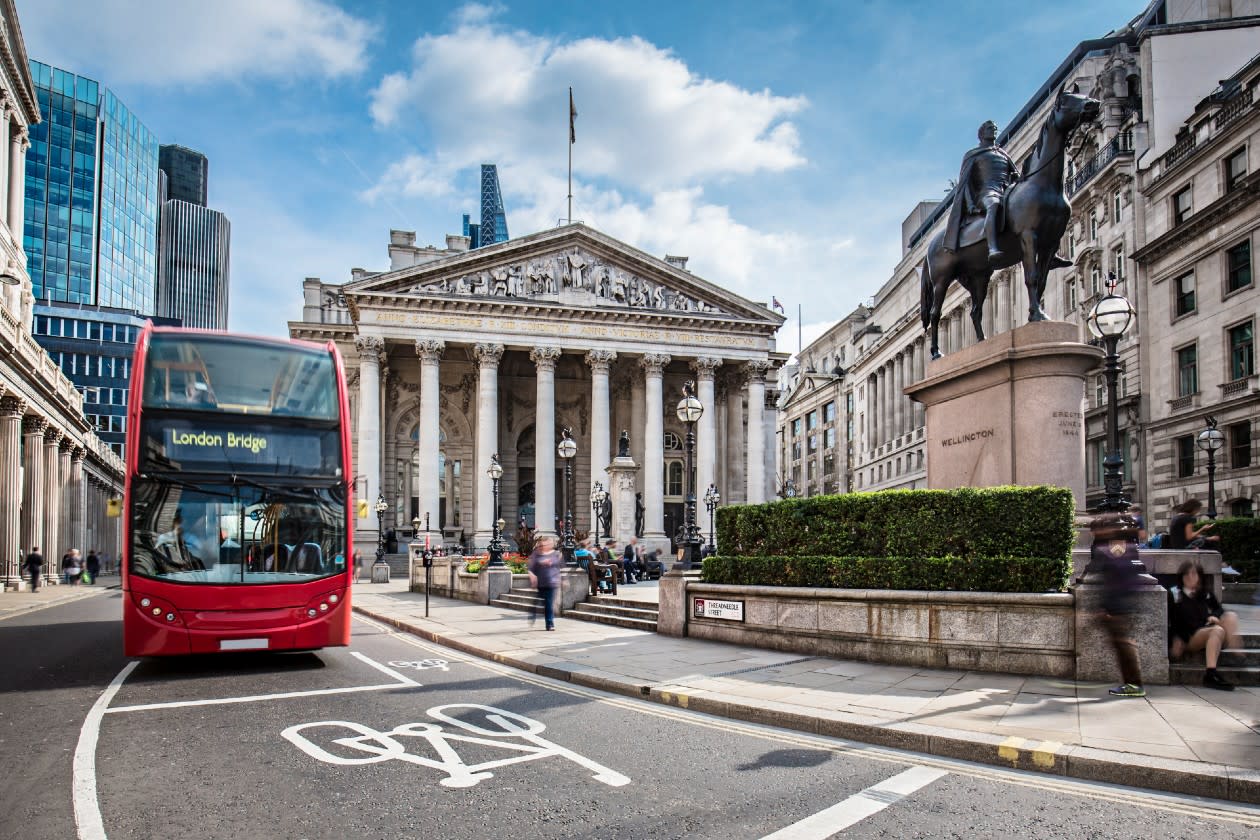Coming into 2024, all the talk in bond markets was about interest rate cuts. Some were suggesting lots of cuts in the US, totalling over a 1% fall for example.
So far, there haven’t been any from the Federal Reserve (Fed), Bank of England (BoE) or the European Central Bank (ECB).
What’s going on and what it could mean for bonds?
This article isn’t personal advice. If you’re not sure whether an investment is right for you, ask for financial advice. All investments and any income from them can fall as well as rise in value, so you could get back less than you invest. Yields are variable and not a reliable indicator of future income. Past performance also isn’t a guide to the future.
Why were investors expecting interest rate cuts?
Investors were expecting multiple rate cuts because inflation was falling, seemingly coming under control and near central bank target levels.
There also haven’t been any interest rate increases from these regions since mid-2023.
So far though, central banks have held firm, with no interest rate cuts from the Fed, BoE or ECB.
What are central banks saying?
US interest rates stayed the same after the Fed’s latest meeting on 30 April 2024. The Fed still has concerns over inflation and whether it might rise again from here.
The US economy has been stronger than anticipated and company earnings in the first three months of the year have beaten expectations. It’s therefore expected the Fed will hold rates for at least the next few months.
The BoE also held rates steady at their meeting last week. Two members voted for a 0.25% cut, while seven others voted to keep rates at 5.25%.
The BoE noted that markets have increased their expectations about where interest rates might be in 2027, from 3.25% to 3.75% and that inflation is forecast to come down, closer to the 2% target in the near term. That said, they also note it could also rise a bit again later in 2024.
The ECB kept rates unchanged at their last meeting on 11 April and noted that while inflation continued to fall slowly back towards their 2% target, it wasn’t there yet.
What does this mean for bonds?
As can often be the way, markets had moved early to price in expectations around interest rates. This caused a rise in bond prices (and fall in yields) into the end of 2023.
So far in 2024, bonds have had mixed fortunes, with government bond prices falling and corporate bonds providing flat or small positive returns.
Within government bonds, the 10-year US Treasury yield has risen from around 3.9% at the start of the year to 4.5% in early May. Similarly, the 10-year UK gilt yield has gone from around 3.5% to 4.2%. Yields move in the opposite direction to prices, so US and UK government bonds have fallen in value so far in 2024.
Corporate bonds have fared better. The reason for this is linked to the higher returns available to reflect the higher potential for companies to default on their bonds compared to governments.
High-yield bonds have performed best so far in 2024. The higher yields available on these bonds has offset the impact of rising yields in that sector.
12-month performance to the end of April shows the rise at the end of 2023, as well as the impact of the shift in expectations about future rate cuts in 2024.
1 year bond market performance
Annual IA sector percentage growth
Apr 19 – Apr 20 | Apr 20 – Apr 21 | Apr 21 – Apr 22 | Apr 22 – Apr 23 | Apr 23 – Apr 24 | |
|---|---|---|---|---|---|
IA £ Corporate Bond | 5.29% | 4.93% | -7.37% | -6.89% | 5.42% |
IA £ High Yield | -6.85% | 18.68% | -4.18% | -1.34% | 9.52% |
IA £ Strategic Bond | 1.19% | 9.46% | -5.11% | -3.80% | 5.54% |
IA UK Gilt | 15.38% | -7.99% | -7.71% | -16.09% | -1.11% |
From here it’s hard to know exactly what to expect. Given where interest rates are today, it’s more likely that there are rate cuts coming in future than many more rate rises. Especially as inflation has come down a lot since its peak. But that doesn’t necessarily mean cuts are coming in the short term.
How have our fixed income Wealth Shortlist funds performed?
Our Wealth Shortlist bond funds have delivered mixed performance over the past year. Some have outperformed their peer group, while others have underperformed.
We wouldn’t expect them all to perform the same though. If all your funds in a sector are performing well at the same time, they're probably investing in similar areas.
Investing in funds isn't right for everyone. Investors should only invest if the fund's objectives are aligned with their own, and there's a specific need for the type of investment being made. Investors should understand the specific risks of a fund before they invest, and make sure any new investment forms part of a long-term diversified portfolio.
For more details on each fund and its risks including charges, see the links to their factsheets and key investor information below.
Artemis High Income
The best-performing Wealth Shortlist fixed income fund over the past year was Artemis High Income – it returned 9.73%*. Past performance isn’t a guide to future returns.
The fund focuses on paying a high income to investors, mainly by investing in bonds. But it can also invest up to a fifth of its assets in UK and European shares.
A focus on high-yield bonds and shares that pay a dividend makes it a little different from most bond funds, though it does also make it a higher-risk option.
The fund also takes charges from capital which could boost the income but reduces the potential for capital growth.
The focus on high-yield bonds has been positive over the last 12 months, with that area of the fixed interest market having performed best over the period.
The fund has the option to use derivatives, which adds risk.
Annual percentage growth
Apr 19-Apr 20 | Apr 20 – Apr 21 | Apr 21 – Apr 22 | Apr 22 – Apr 23 | Apr 23 – Apr 24 | |
|---|---|---|---|---|---|
Artemis High Income | -6.50% | 17.40% | -3.74% | -0.65% | 9.73% |
IA £ Strategic Bond | 1.19% | 9.46% | -5.11% | -3.80% | 5.54% |
M&G Global Macro Bond Fund
The worst-performing Wealth Shortlist fixed income fund over the last 12 months was the M&G Global Macro Bond Fund, returning -5.12% over the period**.
Jim Leaviss and Eva Sun-Wai start with a 'bigger picture' macroeconomic outlook. This includes forming a view on economic growth, interest rates and inflation around the world.
This helps them decide how much to invest in different areas of the bond market and different currencies. This includes emerging markets, high-yield bonds and derivatives, which add risk.
Leaviss has historically used the flexibility afforded to him in the fund to good effect to deliver strong returns for investors. We believe experience is vital for a manager of this type of fund and Leaviss is one of the most experienced bond fund managers in the UK.
The fund’s currency exposure has been the biggest drag on performance. The Japanese Yen has been challenging, as it’s continued to lose value over the period.
The fund may invest more than 35% in securities issued or guaranteed by a member state of the European Economic Area or other countries listed in the fund’s Prospectus.
Annual percentage growth
Apr 19-Apr 20 | Apr 20 – Apr 21 | Apr 21 – Apr 22 | Apr 22 – Apr 23 | Apr 23 – Apr 24 | |
|---|---|---|---|---|---|
M&G Global Macro Bond Fund | 12.63% | -4.92% | -2.16% | -0.48% | -5.12% |
IA Global Mixed Bond | 3.08% | 3.88% | -6.36% | -1.33% | 2.15% |


